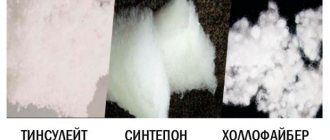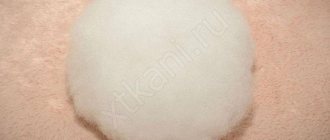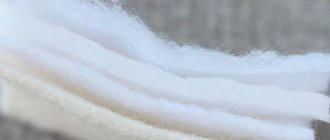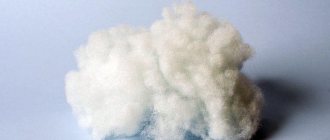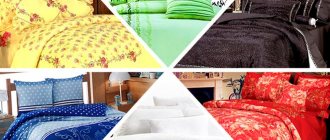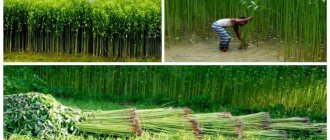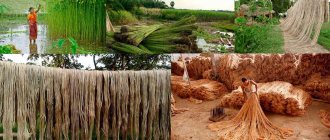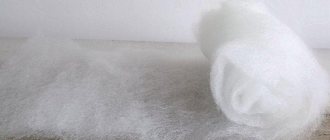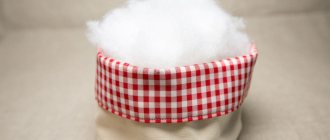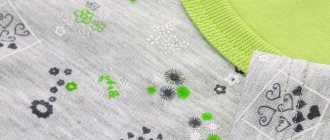| Place | Name | Characteristics in the rating |
| Top 8 best fillings for winter jackets |
| 1 | Pooh | Best quality |
| 2 | Thinsulate | Best warming properties |
| 3 | Shelter | Durable and harmless |
| 4 | Wool | Practicality and warmth |
| 5 | Termofin | Excellent wear resistance |
| 6 | Isosoft | Does not deform |
| 7 | Sintepon | The easiest to care for |
| 8 | Holofiber | Affordable price |
Recommendations for choosing a down jacket
Jackets filled with down are warm and light.
Here are some tips for those who decide to buy a jacket or coat with natural filling.
- If the down jacket is really filled with down, then the English word down will be written on the label. Since clothing made from fluff alone is extremely rare, the word feather will be present nearby, translated as “feather”. Next you need to pay attention to the ratio of these components. A truly warm jacket made of 80% down and 20% feather. For an average winter, when the air temperature rarely drops below -10°C, a down jacket with a ratio of 60/40 or 50/50 is suitable.
- The designations polyester, cotton or wool on the product tag indicate that cotton wool, wool batting or padding polyester was used as filler.
- When choosing a down jacket, you need to make sure that the material is stitched in even blocks of small sizes. If the cells are too large, the fluff will quickly fall off and form lumps, which will spoil the appearance of the product and reduce protection from the cold.
- They produce both single-layer and double-layer down jackets. For a city dweller who does not have to spend a long time on the street, a single-layer model is sufficient, although two-layer ones are much warmer.
- High-quality filler quickly restores its original state after deformation. This property of the product can be easily checked by squeezing a part of the jacket with your hand and abruptly releasing it. In addition, on the tag the manufacturer usually indicates the compression ratio, which is designated by the letters FP. Quality clothing corresponds to an indicator of 550 or more.
- The properties of the filler directly depend on how well the down and feathers are processed. A conscientious manufacturer does not hide information about processing. If the label says DIN EN 12934, it means that the down and feathers have been disinfected, washed and dried properly.
- When choosing a jacket with natural filling, you need to carefully inspect the lining and make sure that the feathers do not pierce the fabric. Otherwise, wearing such clothes will be uncomfortable.
Each manufacturer that respects the reputation of their company supplies their products with a small transparent bag with filler samples and detailed care instructions in the form of a small book.
Synthetic fillers
Modern jackets are often insulated with artificial materials. In many respects they are not inferior to natural fillers, and do not cause allergies.
Sintepon
One of the most popular insulation materials is synthetic winterizer. It is made from polyester fibers, sometimes cotton or wool is added.
Sintepon comes in different densities and consists of several layers. The purpose of the material depends on its thickness. Sintepon also differs according to the production method:
| Sintepon type | Production Features | Properties |
| Needlepunched | The fibers are intensively intertwined, fastened with needles | High quality, density, low susceptibility to deformation, easy maintenance |
| Glued padding polyester | The material is bonded layer by layer with special glue. | The cheapest option, but destruction at temperatures above 40°C, deformation from washing |
| Thermal synthetic winterizer | The fibers are exposed to high temperatures, some of them melt and hold the rest together | The highest quality option, is light in weight, does not collapse from washing or folding |
Synthetic winterizer for jackets is attractive in its lightness, moisture resistance, and preservation of its original shape. The material is easy to care for and dries quickly. It also has disadvantages:
- low wind resistance;
- clumping;
- low warming ability;
- insufficient breathability;
- During the process of maintenance and operation, the original volume is lost.
Holofiber
This down jacket filling consists of spiral-shaped polyester microfibers twisted into balls. This material is considered the best synthetic down substitute. Jackets with it are very light, breathable, hold their shape well - even repeated washings do not spoil the appearance of the product. Down jackets with holofiber have excellent moisture resistance and thermal insulation. These jackets are comfortable down to -25°C.
Thinsulate
Thinsulate is a polyester with a silicone structure. The fibers are twisted into spirals and surrounded by an air layer. This makes the material very warm. Thinsulate is lightweight, shape-resistant, easy to care for, and dries quickly. It practically does not absorb foreign odors and is safe for allergy sufferers. Thinsulate also has disadvantages:
- high price;
- accumulation of static electricity;
- low hygroscopicity.
Fact! Thinsulate is called artificial swan down for its similarity in characteristics to this natural filler. Its fibers are tens of times thinner than human hair, which is why other insulation materials with similar thermal insulation are significantly thicker.
Isosoft
Isosoft is a European membrane insulation with a fine-cell structure. It is often used for down jackets due to its good dimensional stability, excellent heat-protective properties and moisture-repellent ability. Isosoft is safe, easy to clean, and dries quickly. Even repeated washing of the jacket does not change the volume.
Isosoft is lightweight, surpassing even down in this respect. The main disadvantage is the high cost. This is compensated by the long service life of the down jacket.
Sintepooh
Artificial down is thin threads of polyester in the form of springs. Their weave includes air voids, which makes the material very warm. Synthetic fluff does not clump, retains its shape even after washing, and does not absorb moisture. The main disadvantage is insufficient wear resistance. With frequent washing, the thermal insulation properties of synthetic down are reduced.
Shelter
This synthetic filler is made up of ultra-thin polyester microfibers. It is lightweight, breathable, soft, and does not absorb moisture. The shelter has increased thermal protection, which is suitable even for extreme weather conditions.
When choosing a jacket with such filling, it is important to consider its type. For premium down jackets for children and adults, micro shelter is used, for sportswear with water-repellent properties, soft, and for extreme conditions, profi.
Composition and special processing
The material used to sew jackets is most often polyamide or polyester. Somewhat less often, products are sewn from mixed fabrics. The latter are represented by a mix of threads of artificial and natural origin - cotton or wool.
Fact! Membrane fabric is better suited for sportswear.
Fabrics for jackets undergo additional treatment with chemical compounds (indicated by English letters):
- PVC (polyvinyl chloride) - rubberized, therefore waterproof, protects against aggressive chemicals, moisture, and electric current;
- PU (polyamide, polyurethane) - poorly permeable to air, moisture, fire resistant;
- WS - provides a compression effect;
- milky - white, the wrong side of the fabric is processed;
- pich-skin - fleecy, pleasant to the touch, easy to care for;
- silver - silver, sun-protective, holds filler;
- ultra foil - shiny, used to treat the front surface of the canvas;
- membrane - a film that is glued using a hot iron;
- PD - increases strength indicator;
- WR - provides water-repellent properties;
- cire - insulates because it contains fluff.
Isosoft
Down jacket Sauda Down Lady Jacket Bergans, from RUB 16,660
The membrane material invented in Europe, although expensive in European style, is good in all respects. Isosoft outerwear will not crush you to the ground - it is very light. An undoubted advantage for those who like to walk in any weather will be the waterproof nature of the material. It also retains its shape when washed and dries in any position without deforming. Isn't this a dream?
Sintepon
Women's dark blue quilted leather down jacket with hood Adamo, from RUB 34,990
When choosing synthetic winterizer as insulation, you should give preference to a quilted jacket or down jacket. Then the filler will not form lumps when washing. This option has quite a few advantages: it is inexpensive, warm, and easy to care for. You can even dry it in any position without compromising the appearance of the product. Note to allergy sufferers: synthetic winterizer is one of the most hypoallergenic materials.
Wool
Amy Joutsen down jacket, from RUB 35,760
A camel wool jacket will be an excellent choice for those who do not chase fashion trends, but prefer good quality items to all innovations. You will be comfortable in it at any sub-zero temperature - all because the natural material breathes and prevents the body from both overcooling and overheating. However, if you are allergic, then natural fillers are not your option. We recommend taking a closer look at synthetic ones, which in their characteristics are in no way inferior to natural ones.
Pooh
Women's down short coat with a fitted silhouette Joutsen Natalia
Until recently, the most common option for natural insulation. Most often, manufacturers use goose and duck down. This jacket is not cheap. In addition, the products require special care, which will increase the number of trips to the dry cleaner several times. However, some manufacturers add feathers to the down: the jacket remains just as warm, and caring for it becomes much more pleasant - you can wash it in a machine. And the feather in the down jacket gives it volume, which is fashionable today.
